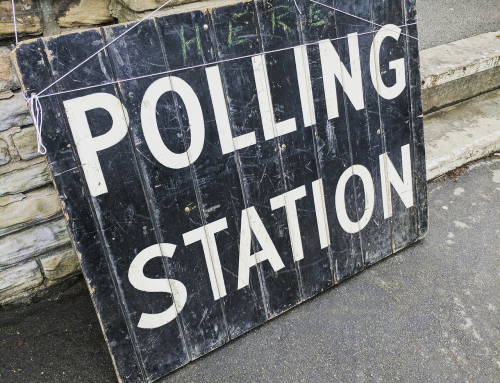I’m writing this based on my experience as a governor in a ‘non-selective school in a highly selective area.’ This mouthful of a name is the term the DfE uses for schools around grammar schools. These schools used to be called ‘secondary moderns’ but this name has faded from regular use, and there is no commonly used replacement. Most likely no one wants to admit they still exist. But they do exist, and they are different from schools in comprehensive areas. These are some of the things you’ll find in ‘secondary modern’ style schools.
- High proportions of disadvantaged pupils
- High proportions of SEND pupils
- Low numbers of high attaining pupils
- Behaviour challenges
- Curriculum limitations
- Governance challenges
- Poor progress 8 scores
- Teacher recruitment issues
Many schools outside selective areas will face similar challenges, but modern day secondary modern schools invariably face all these problems in spades, entirely because of the system of education. Grammar schools generally educate ‘smart’ middle class pupils with good family support who are going to do well in exams, and they leave the trickier pupils for the other schools. Grammars create a local school hierarchy, a class divide and an education divide. Grammar schools are schools that are set up to do well, and all around them they create schools that are set up to face challenges.
Disadvantaged pupils
Grammar schools use an 11-plus test and this acts as a huge barrier to poorer pupils, who are statistically more likely to be behind at school and fail the test. Richer families swing things in their favour still more by paying for 11-plus tuition. There’s also the likelihood that poorer families might decide not to enter sons and daughters for the test, knowing full well that the system doesn’t work in their favour. They might also worry about the cost of travel and so choose a local non-selective school. All this means that grammar schools admit low numbers of disadvantaged pupils, on average 6.7% free school meal pupils, while non-selective schools admit 28.4%. Secondary modern schools will admit a disproportionate number of disadvantaged pupils simply because the grammar schools admit so few. There is extra funding for schools with large numbers of disadvantaged pupils, because these pupils can need extra help to catch up with their peers. However, schools serving the most disadvantaged children have faced the biggest spending cuts over time.
SEND pupils
Modern day secondary modern schools are likely to have high proportions of SEND pupils. Again, this is due to grammar schools admitting tiny numbers of pupils with additional needs. Special school places are in short supply which means non-selective schools in selective areas will be asked to admit many pupils with challenging needs, some of whom might be better served in specialist settings. Secondary modern schools do their vary best to cater for pupils with a wide range of needs, it’s in their nature to be inclusive places. However, school budgets are tight and the teaching assistants and learning support these pupils need can not always be provided. A high number of pupils with challenging needs can make classroom management harder for inexperienced teachers. There are also challenges around behaviour, as in in many cases rules need to be adapted to take pupil’s additional needs into account. Senior leaders and SENCo need to work extra hard to build relationships and work on individualised strategies to meet the needs of complex pupils. Sadly, in many cases a school that is trying it’s best to meet the needs of a large number of SEND pupils will find itself criticised for not doing enough. These days parents are quick to take to social media to complain, but rarely have an understanding of the challenges schools face with a large number of complex children and not enough cash to support individual needs. In my experience SENCo teams are caring heroes trying their best to meet the needs of their pupils, but always overstretched and under resourced.
Low numbers of high attaining pupils
This is the most obvious outcome of being a school near a grammar school. In some areas the grammars take 30-40% of local children, leaving a strong mark on surrounding schools which will have few of the ‘brightest’ pupils. It’s hard to quantify exactly what this means for a school, but many people believe that there’s a positive peer effect when children are surrounded by others who succeed academically. It also normalises going on to higher education. It can also have an impact on the curriculum options offered, particularly at sixth form, and this is detailed below.
Behaviour challenges
Schools with high numbers of disadvantaged , SEND and low attaining pupils are more likely to face behaviour problems for all sorts of reasons. Children from poorer backgrounds can have complex family dynamics, they might be young carers, or suffer with trauma and mental health problems, or find it hard to engage with learning because their home life is troubled. SEND pupils often have emotional and behavioural problems that make it difficult to follow school rules. Lower attaining pupils are forced into a school system that pushes for academic results, and might be likely to disengage from school and care less about the rules. A school with a critical mass of troubled pupils will find it harder to create an ethos of good behaviour. Many secondary moderns manage behaviour well, but I’ve seen far too many develop a poor reputation and become known for bullying or troublemaking. I’ve also seen many talked about for being too strict. Sometimes widespread poor behaviour is dealt with by introducing strong sanctions and ‘no excuses’ policies. In many cases this will be a desperate school that’s tried everything else, though personally I find it hard to support such draconian policies. It is endlessly frustrating that the grammar school and secondary modern divide leads to an unfair categorisation of schools with a bad reputation and schools with a good reputation. The grammar schools cause the reputation problems in the other schools, yet they are always perceived by their community as blameless, as if they are a shining beacon of how things ought to be done.
Curriculum limitations
Setting in subjects is fairly common in comprehensive schools, but secondary moderns don’t always have enough higher attaining pupils to be able to offer top sets. Schools educating a high proportion of lower attaining pupils are less likely to offer all three science subjects, or a choice of languages, or a range of A levels. A reduced range of A levels can reduce pupil choice and limit future options. Many secondary modern pupils excel at GCSE and move to grammar schools, but it is perfectly natural to want to stay on at the same school despite this sometimes limiting options. Larger secondary modern schools are more likely to be able to mitigate these problems.
Governance challenges
There is a huge shortage of school governors and trustees, and in my experience this problem is more acute in secondary modern schools. Those with a connection to a school are more likely to get involved as a volunteer governor, and typically parents and alumni of grammar schools are professionals such as lawyers, doctors, accountants, managers, who can offer skills useful to the governance role. The parents and alumni of secondary modern schools are more likely to be ordinary working families, who may be less likely to give their time to this role. The governing body of my school involves some great people, but we never find it easy to recruit new governors.
Poor progress 8 scores
The government’s chosen school accountability measure is Progress 8, which seems to overstate grammar school’s success and make secondary modern’s results look like the worst imaginable! It is almost impossible for any secondary modern school to achieve a positive score with this measure. This metric gives a number to each school suggesting how many grade’s of progress pupil’s make on average. This is calculated by monitoring pupil progress from when children are aged 11 and sitting SATs, to when they are 16 and achieve GCSE results. Objectively this should be a fair way to judge schools, but this measure can not look at a pupil’s context and research shows some pupil groups do much better than others. The sort of pupils who attend secondary moderns are less likely to thrive at school, and this is one reason that Progress 8 is a problem for secondary moderns. It is demoralising for anyone involved with a secondary modern to know that a negative score is always on the cards. Parents, teachers and Ofsted will all note grammar schools with 0.9 progress 8, and secondary moderns with -0.9 and jump to the ‘obvious’ conclusion that grammar schools are hugely successful and secondary moderns are terrible. This accountability measure only adds to the divide in selective areas.
Teacher recruitment issues
All schools are currently facing a crisis in recruiting and retaining teachers, but secondary modern schools have to compete with grammar schools. Some teachers simply don’t want to work in selective schools and will choose secondary moderns for good ethical reasons. Many more note that secondary moderns contain challenging pupils, are schools that can struggle with behaviour issues, they don’t offer a good range of A level subjects, they’re schools that won’t ever get a good progress 8 score, and this means they’re more likely to be downgraded by Ofsted. I don’t blame teachers for choosing an easier life and applying for roles in a grammar school! I look at the secondary school positions advertised on Kent Teach and found 32 grammar school jobs advertised compared to 99 jobs offered in secondary moderns. Grammar schools make up 31% of Kent’s secondary schools, but only 24% of the teaching vacancies were in selective schools. Is this a hint that grammars are finding it easier to fill positions? Secondary moderns struggling to recruit staff only adds to the many inequalities they face.
Conclusions
Modern day secondary modern schools are real, and they face a host of problems that are caused by the selective system. It’s common to talk about the grammar schools of Kent, Bucks, Lincolnshire and the other selective areas. I only wish people talked about the problematic schools that surround them.





